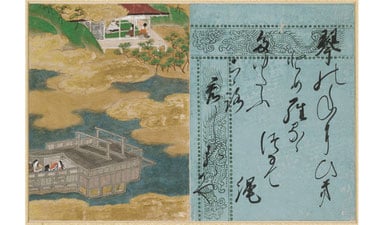- Level Foundation
- Ratings
- Duration 36 hours
- Course by Harvard University
- Total students 19,686 enrolled
-
Offered by

About
Module 1: Books, Scrolls, and Religious Devotion
This unit offers special access to a unique group of books and scrolls and sacred objects once interred inside a thirteenth-century Buddhist sculpture of Prince Shotoku, now in the collection of the Harvard Art Museums. The works to be studied represent the most prevalent formats of Japanese books, but they display striking material idiosyncrasies that will help us understand how and why manuscripts were made, and how they could be personalized for individual readers, motivated, in this case, by religious devotion.
Module 2: Visual and Textual Storytelling: Short-Story Scrolls
Enter into the storyworlds of two lively illustrated Japanese tales, The Tale of the Rat (Nezumi sashi) and The Chrysanthemum Spirit (Kiku no sei monogatari) in the Harvard Art Museums. Both tales are illustrated in the "small scroll" ( ko-e ) format, roughly half the size of standard scrolls, resembling medieval paperbacks, and intended for personal reading and private libraries. This unit focuses on reading experience, exploring the interrelationship between word and image, and explaining how literary and pictorial conventions work together to communicate a story.
Module 3: "Multimedia" Books: The Tale of Genji
Japan's most celebrated work of fiction, The Tale of Genji , has been continuously read from the time it appeared in the eleventh-century to the present day and provides a perfect case study for exploring various book formats over the centuries in Japan. Using decorated manuscripts, richly illustrated albums, and a playful printed book of a Genji spin-off, A Fraudulent Murasaki's Rustic Genji (Nise Murasaki Inaka Genji), this unit showcases the spectacular visual and material properties of Genji volumes that make them suggestive of "multimedia" books.
What you will learn
- How to examine Japanese books and scrolls
- Different types of bindings, scroll formats, printing techniques, and basic terminology
- Different approaches to visual and textual storytelling
- Short stories and epic tales— plots, characters, and illustrative devices
- How to analyze and appreciate illustrated narratives
Skills you learn
Auto Summary
Unlock the rich history and artistry of Japanese literature with the course "Japanese Books: From Manuscript to Print," a compelling journey through the evolution of book formats in Japan. Curated within the Arts & Humanities domain, this course is expertly guided by Harvard's distinguished faculty and offers exclusive access to rare artifacts from the Harvard Art Museums. Dive into three meticulously crafted modules: 1. **Books, Scrolls, and Religious Devotion** - Explore unique books and scrolls once housed in a 13th-century Buddhist sculpture, uncovering the personalized nature of manuscripts driven by religious devotion. 2. **Visual and Textual Storytelling: Short-Story Scrolls** - Immerse yourself in the illustrated tales of "The Tale of the Rat" and "The Chrysanthemum Spirit," learning how text and imagery intertwine to create compelling narratives. 3. **"Multimedia" Books: The Tale of Genji** - Analyze various formats of Japan's most celebrated novel, "The Tale of Genji," from decorated manuscripts to illustrated albums and playful printed spin-offs, showcasing the evolution of "multimedia" storytelling. This foundational course spans 36 hours and is ideal for learners seeking a comprehensive understanding of Japanese literary and cultural heritage. Enroll through edX with a professional subscription to gain profound insights into the artistic and material intricacies of these historical texts. Whether you're a literature enthusiast, a cultural historian, or simply curious, this course promises an enriching educational experience.

Melissa McCormick


